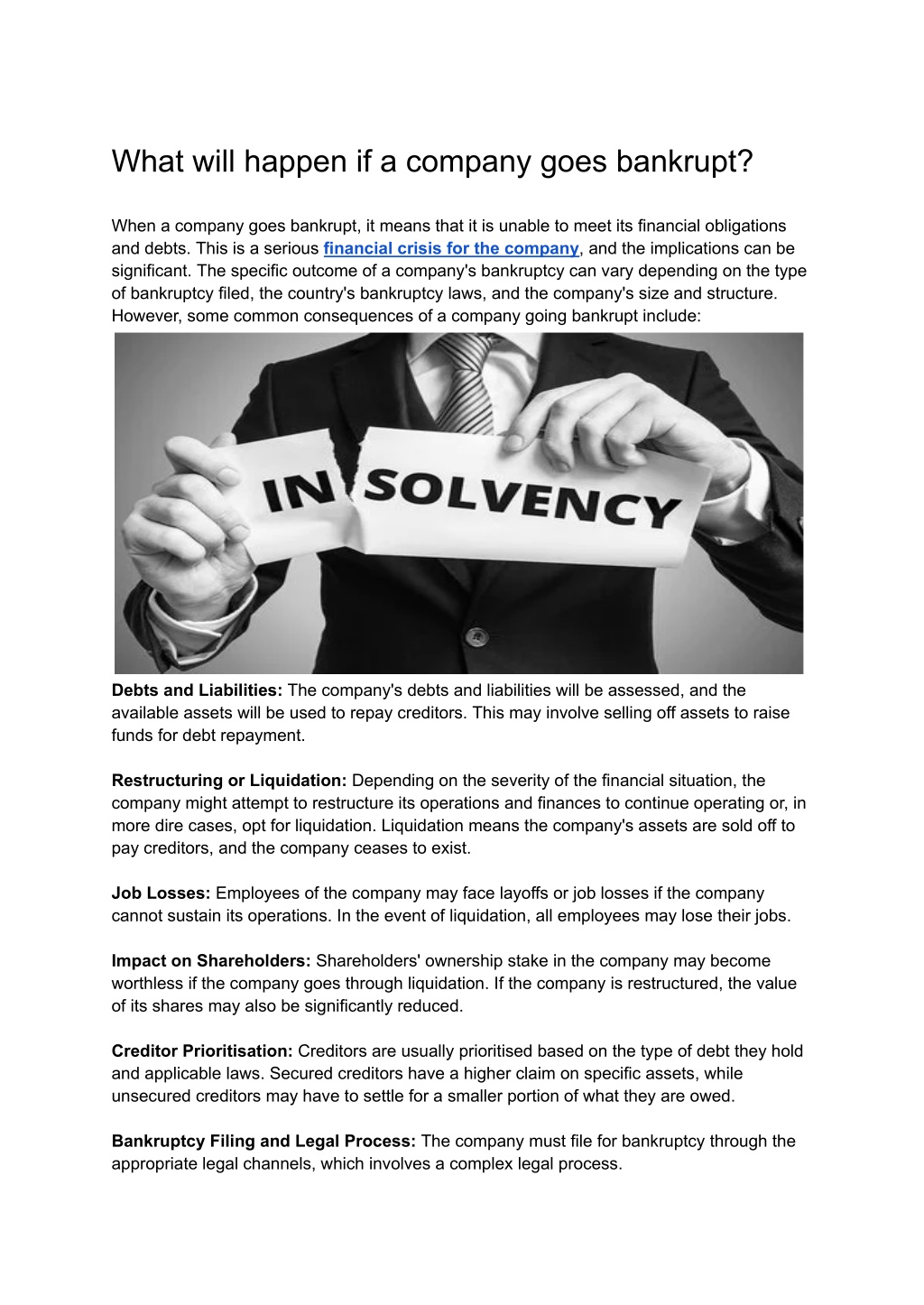Navigating Company Administration: Understanding the Process in the UK
Navigating Company Administration: Understanding the Process in the UK
Blog Article
The Refine and Effects of a Company Coming In Management
As a business deals with monetary distress, the choice to enter management marks an important juncture that can have far-reaching implications for all included celebrations. The procedure of entering management is detailed, entailing a collection of steps that aim to navigate the business towards potential recuperation or, in many cases, liquidation. Comprehending the roles and obligations of a manager, the effect on various stakeholders, and the legal responsibilities that enter into play is essential in comprehending the gravity of this circumstance. The repercussions of such a move surge beyond the business itself, forming its future trajectory and affecting the wider company landscape.
Review of Business Management Refine
In the world of business restructuring, an important preliminary action is getting a thorough understanding of the intricate business administration procedure. Company administration describes the formal insolvency procedure that intends to rescue a financially troubled business or accomplish a far better outcome for the firm's creditors than would be feasible in a liquidation situation. This procedure includes the appointment of a manager, that takes control of the company from its directors to evaluate the monetary scenario and determine the ideal training course of activity.
Throughout management, the company is given protection from lawsuit by its financial institutions, giving a halt duration to develop a restructuring strategy. The manager collaborates with the business's administration, financial institutions, and various other stakeholders to develop a technique that may entail selling business as a going worry, reaching a business voluntary plan (CVA) with lenders, or ultimately positioning the company into liquidation if rescue attempts verify useless. The key objective of firm management is to optimize the return to creditors while either returning the company to solvency or closing it down in an organized way.

Roles and Duties of Administrator
Playing a pivotal role in managing the business's economic affairs and decision-making procedures, the administrator thinks substantial responsibilities throughout the corporate restructuring process. The main responsibility of the administrator is to act in the most effective rate of interests of the business's creditors, aiming to accomplish one of the most positive outcome feasible - company administration uk. This includes conducting a comprehensive assessment of the firm's monetary situation, establishing a restructuring strategy, and applying techniques to maximize go back to creditors
Additionally, the administrator is accountable for liaising with different stakeholders, including staff members, vendors, and regulatory bodies, to ensure openness and conformity throughout the administration process. They need to additionally connect efficiently with shareholders, supplying regular updates on the firm's progress and seeking their input when needed.
Moreover, the manager plays a critical role in handling the day-to-day procedures of business, making crucial choices to maintain connection and protect worth. This consists of examining the viability of different restructuring alternatives, working out with creditors, and eventually assisting the business in the direction of an effective exit from administration.
Effect on Company Stakeholders
Assuming a crucial position in supervising the company's decision-making processes and monetary events, the manager's activities throughout the business restructuring procedure have a straight influence on numerous firm stakeholders. Clients might experience disruptions in services or item accessibility during the administration procedure, impacting their trust fund and loyalty towards the firm. Additionally, the neighborhood where the firm operates might be impacted by prospective job losses or modifications in the business's operations, influencing regional economic situations.
Lawful Implications and Obligations
During the process of company administration, cautious factor to consider of the lawful effects and commitments is vital to make certain compliance and safeguard the passions of all stakeholders included. When a firm enters administration, it triggers a set of legal needs that should be stuck to. Among the primary obligations is for the designated administrator to act in the best interests of the firm's creditors. This task calls for the administrator to perform thorough examinations into the firm's events, analyze its monetary setting, and develop a method to make the most of returns to lenders.
Additionally, lawful effects emerge worrying the treatment of employees. The manager should comply with work laws pertaining to redundancies, staff member rights, and i thought about this obligations to give needed information to worker agents. Failure to adhere to these lawful requirements can lead to lawful action against the firm or its managers.
Moreover, the business entering administration might have legal obligations with numerous parties, including property owners, consumers, and suppliers. These agreements need to be reviewed to figure out the finest training course of activity, whether to end, renegotiate, or fulfill them. Failing to manage these contractual obligations properly can result in disagreements and possible legal effects. In significance, understanding and fulfilling lawful commitments are essential aspects of browsing a business via the management process.
Strategies for Business Recuperation or Liquidation
In considering the future instructions of a business in management, calculated preparation for either recovery or liquidation is crucial to chart a practical course forward. When aiming for company recovery, essential methods might include performing a complete evaluation of business procedures to recognize ineffectiveness, renegotiating leases or contracts to improve money circulation, and applying cost-cutting actions to boost earnings. Furthermore, looking for brand-new financial investment or financing options, expanding profits streams, and concentrating on core competencies can all add to a successful recuperation plan.

Conclusion
In conclusion, the procedure of a firm entering management entails the appointment of an administrator, who takes on the obligations of taking care of the business's affairs. This procedure can have substantial effects for various stakeholders, consisting of lenders, workers, and shareholders. It is necessary for business to carefully consider their options and methods for either recovering from monetary troubles or continuing with liquidation in order to reduce prospective legal implications and commitments.
Firm management refers to the official insolvency procedure that intends to save an economically distressed company or accomplish a far better outcome for the firm's financial institutions than would certainly be feasible in a liquidation scenario. The administrator works with the company's monitoring, creditors, and various other stakeholders to create a strategy that might involve offering the organization as a going problem, getting to a firm volunteer plan (CVA) with lenders, or ultimately positioning the firm into liquidation if rescue attempts prove useless. The primary goal of business administration is to make best use of the return to lenders while either returning the company to a knockout post solvency or closing it down in an orderly manner.
Assuming an important setting in overseeing the firm's decision-making procedures and financial events, the manager's actions during the business restructuring procedure have a straight influence on various firm stakeholders.In verdict, the process of click this link a company entering administration entails the visit of a manager, who takes on the responsibilities of managing the firm's affairs.
Report this page